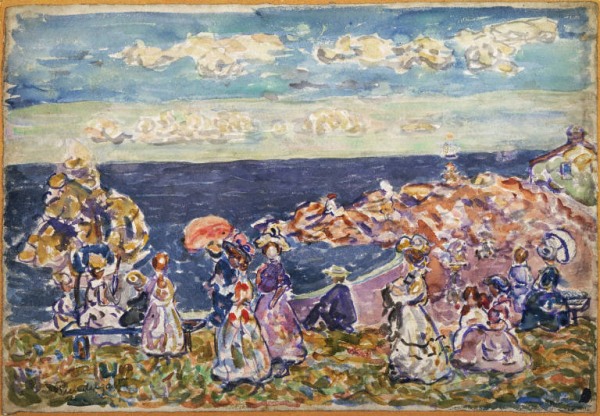
Maurice Prendergast, On the Beach, c. 1907-1909. Watercolor and pencil on paper, 14 1/2 x 21 1/2 in. The Phillips Collection, Washington, D.C. Acquired 1926.
Last week’s glorious weather inspired me to put together a shortlist of things to read, hear, or see this summer:
To the End of the Land, David Grossman’s haunting novel of love and magical thinking that centers on the emotional struggle of an Israeli mother hiking through the mountainous terrain of Galilee with her son’s estranged father in an ingenuous attempt to keep their son alive while he is on a military offensive in Lebanon by telling his father stories about him.
The Tiger’s Wife by Téa Obreht. A brilliant first novel of old-world beauty and magic by a surprisingly mature 25-year old, it consists of a series of interwoven stories that take place in a fictional Balkan country and feature, among many other remarkable and wondrous characters, a mute woman who befriends a tiger that has escaped from the zoo and a deathless man who has been condemned to live forever.
Don’t kill the birthday girl! by Washington-based poet and longtime friend of The Phillips Collection, Sandra Beasley. A touching and enlightening memoir of an “Allergy Girl” about learning to live with severe food allergies.
STRATA, the stirring recording of the “Symphony No. 6” by the Estonian contemporary composer Erkki-Sven Tüür, whose music was performed last February as part of the Phillips’s Leading European Composers series (ECM; Nordic Symphonic Orchestra; Anu Tali, conductor).
Rooms with a View at the Metropolitan Museum of Art in New York (on view through July 4), one of the most beautiful exhibitions I have seen in a very long time, exquisitely curated by Sabine Rewald, the Jacques and Natasha Gelman Curator in the Department of Nineteenth-Century, Modern, and Contemporary Art at the Met.
Game of Thrones, a new HBO series based on the epic fantasy novels by George R.R. Martin, about the violent struggle for control over the Seven Kingdoms of the northern realm under the background of the arrival of a long winter, which in this world can last several lifetimes and may bring with it unimaginable horrors. In short, the perfect entertainment while we endure the effects of global warming this summer.
